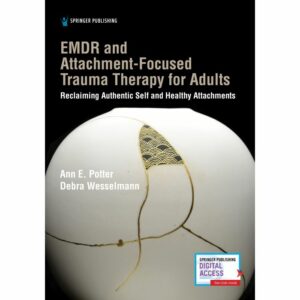EMDRIA Trailblazers Offer Recommendations for Newly Trained EMDR Therapists
We are celebrating the EMDRIA Trailblazers, EMDR therapists who have been with EMDRIA for more than 20 years! Here they answer “What recommendations would you offer to newly trained EMDR therapists?”
Read MoreImplementation of evidence-based treatment for PTSD in Norway: Clinical outcomes and impact of probable complex PTSD (European Journal of Psychotraumatology, 2022)
Effectiveness of Cognitive therapy for PTSD and EMDR in Norwegian outpatient mental health clinics for adults.
Read MoreTherapeutic Challenges in the Application of EMDR Therapy to Complex Trauma Cases
This presentation explores common challenges and blockages in working with complex trauma processing within EMDR therapy.
Read MorePolyvagal Puppet Play – Neuroscience, EMDR, and Ception PuppetsTM Fun!
Through an integrative theoretical framework, participants explore innovative and playful integration of EMDR and the Polyvagal theory.
Read MoreEMDR Therapy and Sexual Health Symposium: Let’s Keep Talking About Sex
Panelists explore sexual health information to help EMDR clients move towards empowered sexual health & integrating sexuality & spirituality.
Read MoreLeadership Series: Culturally Based Trauma and Adversity: Recognition, Definition, and Implications
This course offers the term Culturally Based Trauma & Adversity (CBTA) for trauma based in social, cultural or societal circumstances.
Read MoreTerapia EMDR para Niños y Adolescentes con Necesidades de Apego
En esta conferencia, veremos la relación directa existente entre apego y adquisición de recursos regulatorios.
Read MoreBIPOC and Ally Approaches to Trauma-Focused Anti-Oppression Systemic Change
This presentation will demonstrate that when there is full integration of anti-oppressive practice into EMDR therapy, change is possible.
Read MoreEMDR y Terapia de Pareja
En la presentación EMDR y Terapia de Pareja, se hará especial énfasis en cómo se hace la conceptualización del tema que presenta la pareja, con el modelo terapéutico EMDR.
Read MoreUtilizing EMDR with the Fragmented and Dissociative Child
This workshop describes core symptoms of dissociation, overlap with other disorders, and a comprehensive dissociative checklist.
Read More




